Are you new to OneDrive on Windows 10? If so, use this guide to get started with the cloud storage service.
OneDrive is the cloud storage service that Microsoft offers to store all your files securely in one place, which you can then access from virtually anywhere.
The service works like a traditional external drive, but with the difference that it is available through the internet and offers additional features. For example, since it works across devices and platforms, you can create a file on one device and pick up where you left off on another (desktop computer, laptop, tablet, or phone) without having to transfer anything to a USB flash drive or email it to yourself, which not only creates extra steps but also creates unnecessary copies. Also, OneDrive makes it easy to share content with other people and collaborate in real-time using the Microsoft 365 integration.
If you use a Windows 10 device, you get even more features. When setting up the service with a Microsoft account on your computer, you can also sync and roam your system preferences and many settings (including BitLocker recovery keys) across your devices. Files On-Demand is also another cool feature that allows you to access all your files without downloading them, saving a lot of local storage. And since the data is stored in the cloud, you can use it as a data recovery mechanism if the computer breaks or is stolen.
In this Windows 10 guide, we will walk you through the process to create an account, set up the client, and perform everyday tasks with OneDrive.
- How to create account for OneDrive
- How to set up OneDrive on Windows 10
- How to upload files to OneDrive
- How to choose folders available locally in OneDrive
- How to determine sync status badges in OneDrive
- How to use Files On-Demand with OneDrive
- How to share files with OneDrive
- How to restore previous version of files in OneDrive
- How to set up Personal Vault with OneDrive
- How to check storage usage in OneDrive
How to create account for OneDrive
Whether you use Windows 10 or macOS or have an iPhone or Android phone, you will need a Microsoft account to use OneDrive. If you have a @outlook.com, @live.com, or @hotmail.com email address, or Xbox network account, you already have a Microsoft account, and you can use it to access the cloud storage service.
To create a new OneDrive account, when you don't have a Microsoft account, use these steps:
- Open OneDrive website.
-
Click the Sign in button.
-
Click the Create one option.
Quick tip: If you have an email from another service (for example, Gmail), you can use it to create an account instead of getting a new address.
- Confirm an existing email address from another system — for example, Google Gmail.
-
(Optional) Click the Get a new email address option if you do not have one or want to use something different.
-
Create a new email address.
- Select the @outlook.com option.
- Click the Next button.
- Continue with the on-screen directions to complete the process.
Once you complete the steps, you can connect the account to Windows 10 and start using OneDrive.
How to set up OneDrive on Windows 10
On Windows 10, when setting up a new installation, OneDrive is usually automatically configured once you add a Microsoft account to create a system account. However, if this is not the case, or you are setting up the cloud service with a new account, you will need to configure the service manually.
Setting up OneDrive on your device is a straightforward process. Here's how:
- Open Start.
-
Search OneDrive and click the top result to open the app.
Quick tip: If you do not find OneDrive on the Start menu, the client is probably not installed. You can download the OneDrive client offline installer from Microsoft and double-click the file to install it. Also, if the setup process does not appear, right-click the cloud icon from the notification area and select the Sign in button.
- Confirm the Microsoft account address.
-
Click the Sign in button.
- Confirm your account password.
- Click the Sign in button again.
-
(Optional) Click the Change location option to specify a different folder to store the cloud files. (Usually, the default location is recommended.)
- Click the Next button.
-
(Optional) Clear the Desktop, Documents, and Pictures selections.
Quick note: OneDrive offers the ability to back up your system profile folders. Although it is recommended to use this option, you may not have enough space to upload all your files if you have the free version of the service. If this is the case, skip this option until you sign up for a subscription plan. You can always access the backup settings from the Backup tab in the OneDrive settings.
- Click the Skip button (or Continue button).
- Click the Not now button.
- Click the Next button.
- Click the Next button again.
-
Click the Next button one more time.
- Click the Later button.
- Click the Close button.
After you complete the steps, OneDrive will be ready to start uploading files.
How to upload files to OneDrive
OneDrive connects seamlessly with File Explorer to make the process of uploading files super easy.
To upload documents and other files to OneDrive on Windows 10, use these steps:
- Open File Explorer.
-
Click on OneDrive from the left pane.
Quick note: On devices with multiple OneDrive accounts, the folders may be named differently. For example: "OneDrive — Personal" for your regular account, and "OneDrive — Family" for business accounts.
- Snap the OneDrive folder to the left side (Windows key + left arrow).
- Open another instance of File Explorer (Windows key + E).
- Navigate to the folder with the content you want to upload.
- Snap the folder with the local files to the right side (Windows key + right arrow).
-
Drag and drop each file and folder you want to upload to the OneDrive folder (left).
Once you complete the steps, the files and folder in the OneDrive location will automatically sync to the cloud service in the background.
Of course, this is only one way to upload files. You can always cut and paste the files into the OneDrive folder. Or you can select the files and use the "Move to" option available in the "Home" tab of File Explorer.
In the future, instead of continually making transfers manually, remember that within the application, you can always save files directly into the OneDrive folder.
If you have many files, 5GB of storage may not be enough with the free account. As a result, we recommend opting into one of the Microsoft 365 plans as it comes with 1,000GB of OneDrive storage and additional perks. For instance, with the subscription, you get access to the Office apps, Microsoft Family Safety, Microsoft Teams (consumer), and other features like Microsoft Editor, PowerPoint Presenter Coach, Money in Excel, and more.
Furthermore, with the subscription, you can also purchase an addition 1TB of storage for a total of 2TB.
Microsoft 365
Get subscribed
From $70 at Microsoft
Microsoft 365 (Office 365) gives you full access to all the apps and perks, such as 1TB OneDrive storage and Skype minutes. You can also install Word, Excel, PowerPoint, Outlook, and other apps on up to five devices, and depending on the subscription, you can share the account with up to six people.
How to select folders available locally in OneDrive
You can also choose which folder will be accessible locally from File Explorer.
To choose the OneDrive folders available through File Explorer on Windows 10, use these steps:
- Click the OneDrive (cloud) button from the notification area.
- Click the Help & Settings menu.
-
Select the Settings option.
- Click the Account tab.
-
Click the Choose folders button.
-
Clear the folders you do not want to make available inside File Explorer.
- Click the OK button.
Once you complete the steps, only the folders you selected will be available as files on-demand, and any other folder will be hidden from File Explorer.
If you are also using the backup option, you won't be able to customize this feature. If this is the case, you will need to stop the OneDrive backup for those folders before hiding them.
How to determine sync status badges in OneDrive
OneDrive uses at least 10 different badges to indicate the status of the app and file syncing process.
OneDrive icon status
-
Solid white cloud icon — Confirms that OneDrive is running without problems and sync is up to date.
-
Solid blue cloud icon — Indicates a "OneDrive for Business" account is configured. The sync is up to date, and there are no problems.
-
Solid gray cloud icon — Lets you know that OneDrive is running, but the account is signed out or not connected to any account.
-
Cloud icon with arrows forming a circle — The sync client is actively downloading or uploading files to the cloud.
-
Solid red with white X icon — Lets you know that OneDrive is running, but there are sync problems.
Files and folders statuses
- White cloud with blue borders icon — Indicates the file is available only with an internet connection, and it is not using space on the local storage. You will need to double-click the file to finish the download and open it with an app.
- White icon with green borders and checkmark icon — File is available offline. You can open it without an internet connection, and it is using local storage space.
- Solid green with white checkmark icon — Indicates that you are using the "Always keep on this device" option to ensure important files are available offline.
- Solid red with white X icon — Indicates a problem trying to sync a particular folder or file.
-
Cloud icon with arrows forming a circle — Indicates a file is currently syncing to the cloud service.
How to use Files On-Demand with OneDrive
OneDrive Files On-Demand is a feature that enables you to access your entire collection of files using File Explorer without having to download them to your device.
When the feature is enabled, OneDrive will only download small pieces of information to make the content visible on the computer, allowing you to sync hundreds of gigabytes without utilizing the local space quickly. However, you will need an internet connection to open files that you do not explicitly make available offline or did not already open.
Files On-Demand should come enabled by default, but if it is not, you can enable it with these steps:
- Click the OneDrive (cloud) button from the notification area.
- Click the Help & Settings menu.
-
Select the Settings option.
- Click the Settings tab.
-
Under the "Files On-Demand" section, check the Save space and download files as you use them option.
Quick tip: In the same way, if the feature is not for you, then clear the option to disable it.
- Click the OK button.
Once you complete the steps, OneDrive Files On-Demand will be enabled on the device.
Manage Files On-Demand
You can also manage your files in different ways. Here's how:
- Open OneDrive folder.
-
Right-click the file or folder and choose one of the options:
- Free up space: Makes a file available only with an internet connection while saving hard drive space.
- Always keep on this device: Ensures the content is always available offline, but it'll use hard drive space.
After you complete the steps, depending on your selection, the files will always be kept on the device or only with an internet connection to save storage space.
How to share files with OneDrive
You can also use OneDrive to share files with family, friends, or colleagues. Instead of copying files using a USB flash drive or sending emails, the cloud storage service lets you share virtually any files with anyone. This is possible by creating a secure link that others can use to access the content, and you can revoke it at any time.
To share files with OneDrive on Windows 10, use these steps:
- Open OneDrive folder.
-
Right-click the file and select the Share option.
- (Optional) Click the Anyone with the link can edit option.
-
Clear the Allow editing option if you want someone else to only view the file.
Quick tip: If you have a Microsoft 365 subscription or OneDrive plan, you can also set the expiration date and password for the file you are sharing.
- Click the Apply button.
-
Specify the email address if you'll be sending the link to another person. Or click the Copy Link option to copy the link to the clipboard.
- Click the Send button.
- Click the Close button.
After you complete the steps, the recipient will receive the link to access the shared files. If you copied the link, you could paste the link on an email or social media post to share the content.
Stop sharing file in OneDrive
To stop sharing a particular file stored in the cloud, use these steps:
- Open OneDrive folder.
-
Right-click the shared file and select the Share option.
- Click the three-dotted button in the top-right corner.
-
Select the Manage access option.
- Click the Remove link (X) button.
- Click the Edit button for the email account for which you want to stop access.
-
Click the Stop sharing option.
- Repeat steps No. 6 and 7 to remove other users (as necessary).
Once you complete the steps, the files will no longer be accessible by other people.
How to restore previous version of files in OneDrive
Similar to the web version, the OneDrive integration with File Explorer includes "version history," a feature that allows you to view and restore older versions of files, including Office documents, pictures, videos, and virtually any type of files, including folders.
To view and restore a previous version of a file in OneDrive, use these steps:
- Open OneDrive folder.
-
Right-click the shared file and select the Version history option.
Quick tip: If the file is open, close it before restoring a previous version.
- View all the available versions of the file.
- Select the version you want to restore and click the three-dotted button.
-
Click the Restore option.
After you complete the steps, the version you selected will replace the older version of the file available in the cloud storage service.
How to set up Personal Vault with OneDrive
Personal Vault is a feature available for OneDrive users that provides a protected area to store sensitive files (such as confidential documents, personal records, pictures, etc.) using more robust security with two-factor authentication like biometrics, PIN, as well as email or phone code, in addition to the typical sign-in process to access the service.
To set up OneDrive Personal Vault, use these steps:
- Click the OneDrive (cloud) button from the notification area.
- Click the Help & Settings menu.
-
Click the Unlock Personal Vault menu.
Quick note: You may also see a Get started button when opening the OneDrive app, which can also help you set up the feature.
-
Click the Next button.
-
Click the Allow button.
- Continue with the on-screen directions to verify your account.
Once you complete the steps, you can start saving files to the secure area of OneDrive. If you have additional devices, you will need to repeat the instructions anywhere you want to access the files.
The feature is available at no extra cost, but you will need a Microsoft 365 subscription to store more than three files. (You can always get around this limitation using this workaround.)
The feature is part of the client, but you can enable it on your OneDrive account.
If you want to access the files again, you can open Personal Vault by double-clicking the icon inside the OneDrive folder and following the on-screen directions to sign in. The folder will eventually close automatically, but you can lock it by right-clicking the icon and selecting the Lock Personal Vault option. (You can learn more about using this security feature with this guide.)
How to check storage usage in OneDrive
Microsoft offers a free tier of OneDrive, but it includes only 5GB of space. If you plan to store a lot of data (including photos and videos), you can always upgrade your account to 100GB by opting into a $1.99 per-month subscription.
If you need even more storage, you can switch to a Microsoft 365 Personal subscription, which includes 1TB of OneDrive storage and access to the suite of Office applications and much more.
To view the current storage usage of OneDrive, use these steps:
- Click the OneDrive (cloud) button from the notification area.
- Click the Help & Settings menu.
-
Click on Settings.
- Click the Account tab.
-
Under the "OneDrive" section, confirm the storage usage and how much space you have left.
If you are running low on space, click the Get more storage link to open OneDrive on the web to select the subscription plan that best fits your situation.
More Windows 10 resources
For more helpful articles, coverage, and answers to common questions about Windows 10, visit the following resources:
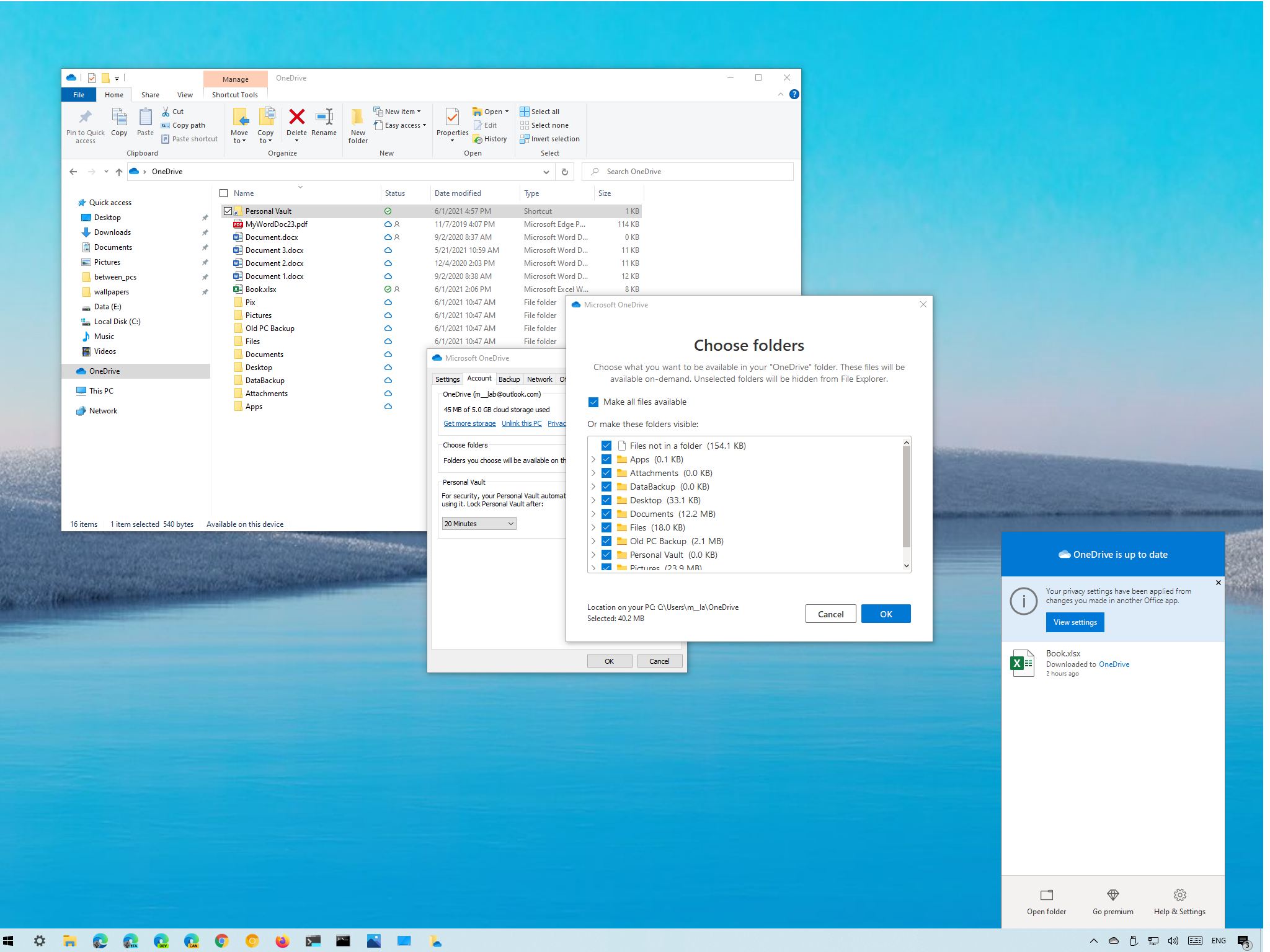
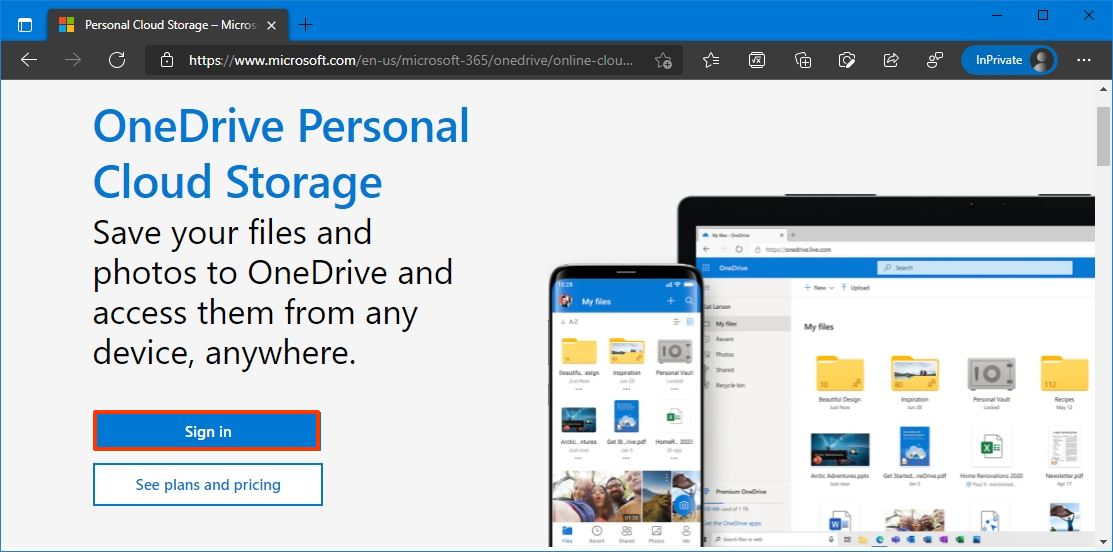
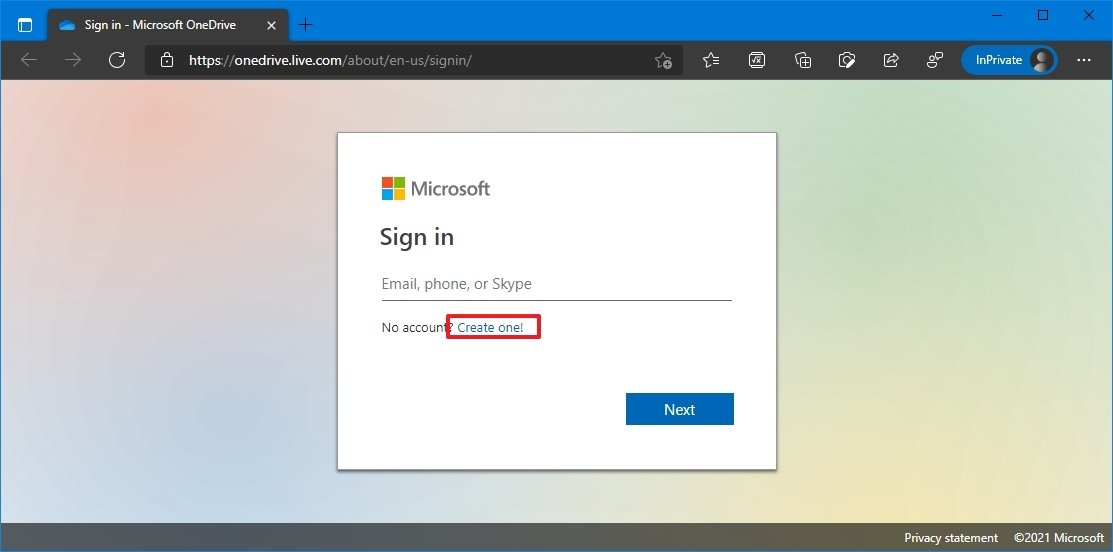
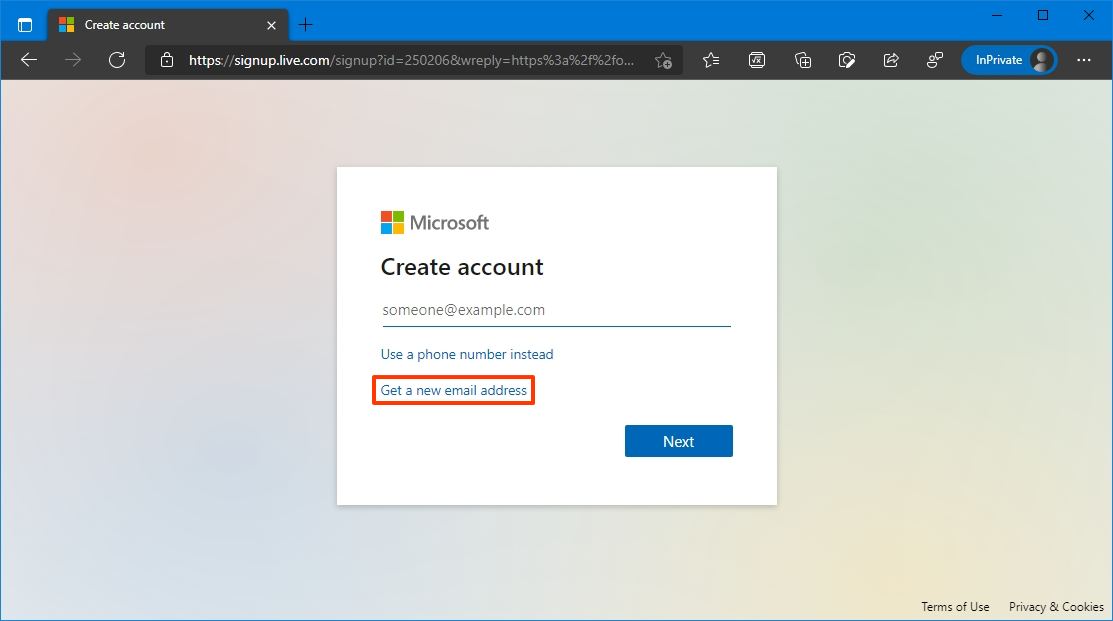
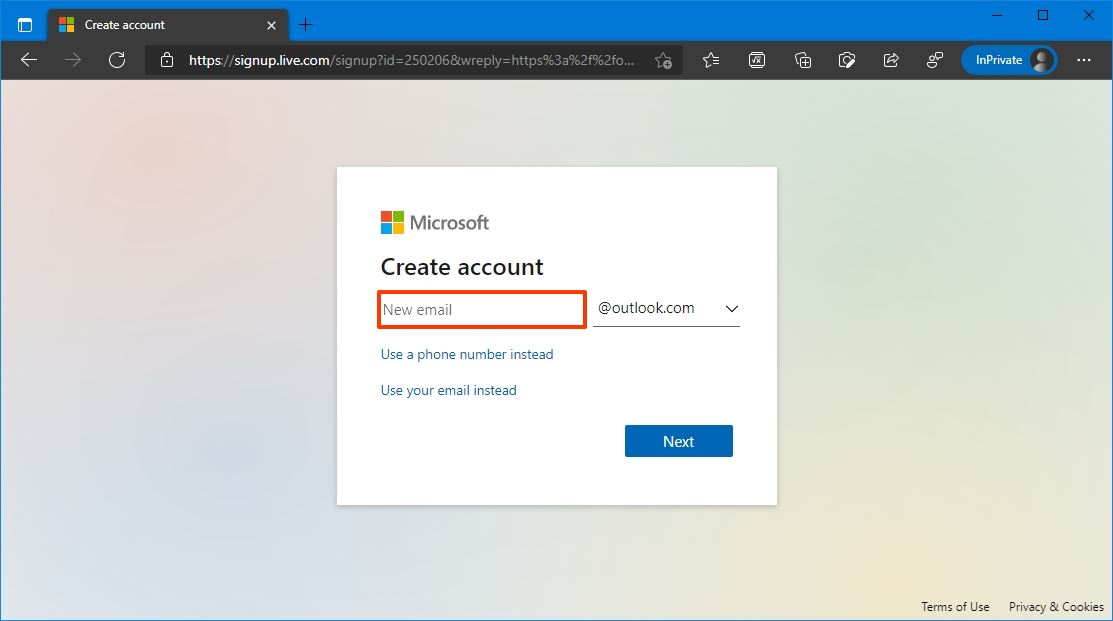
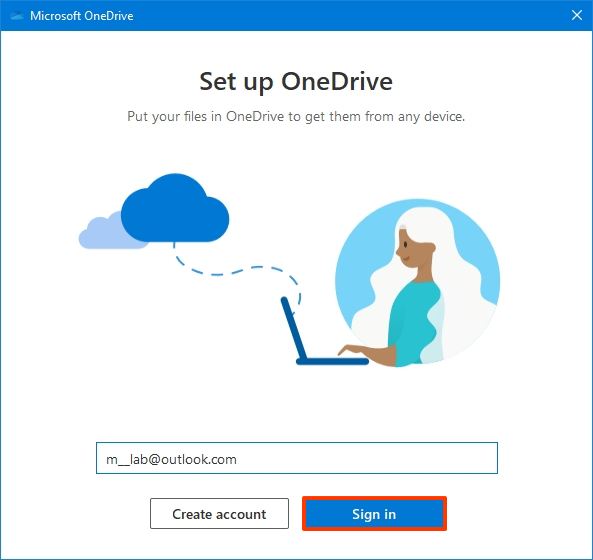
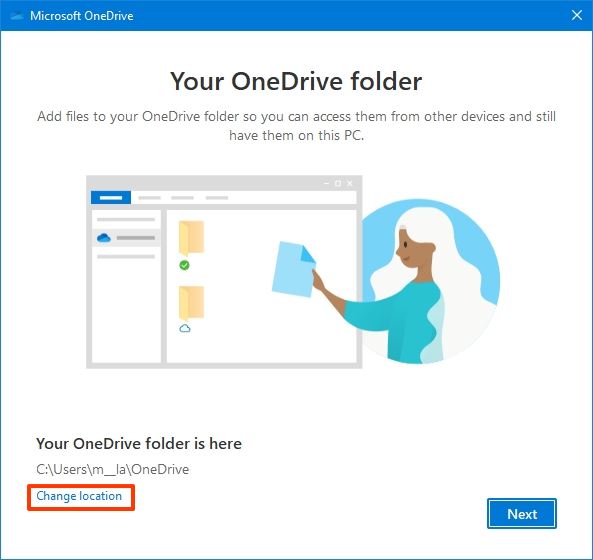
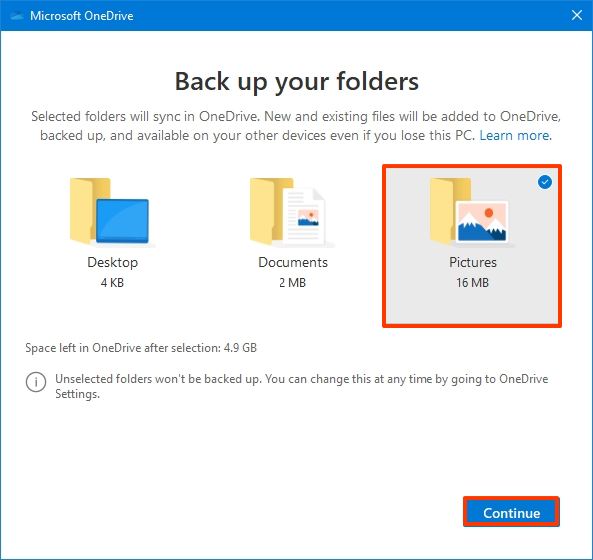
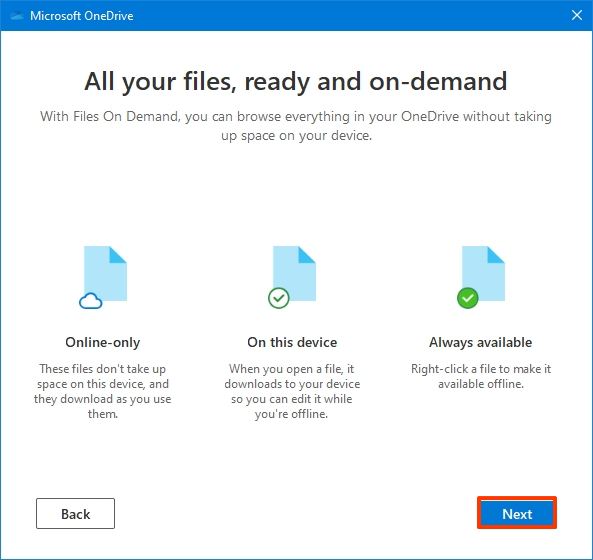
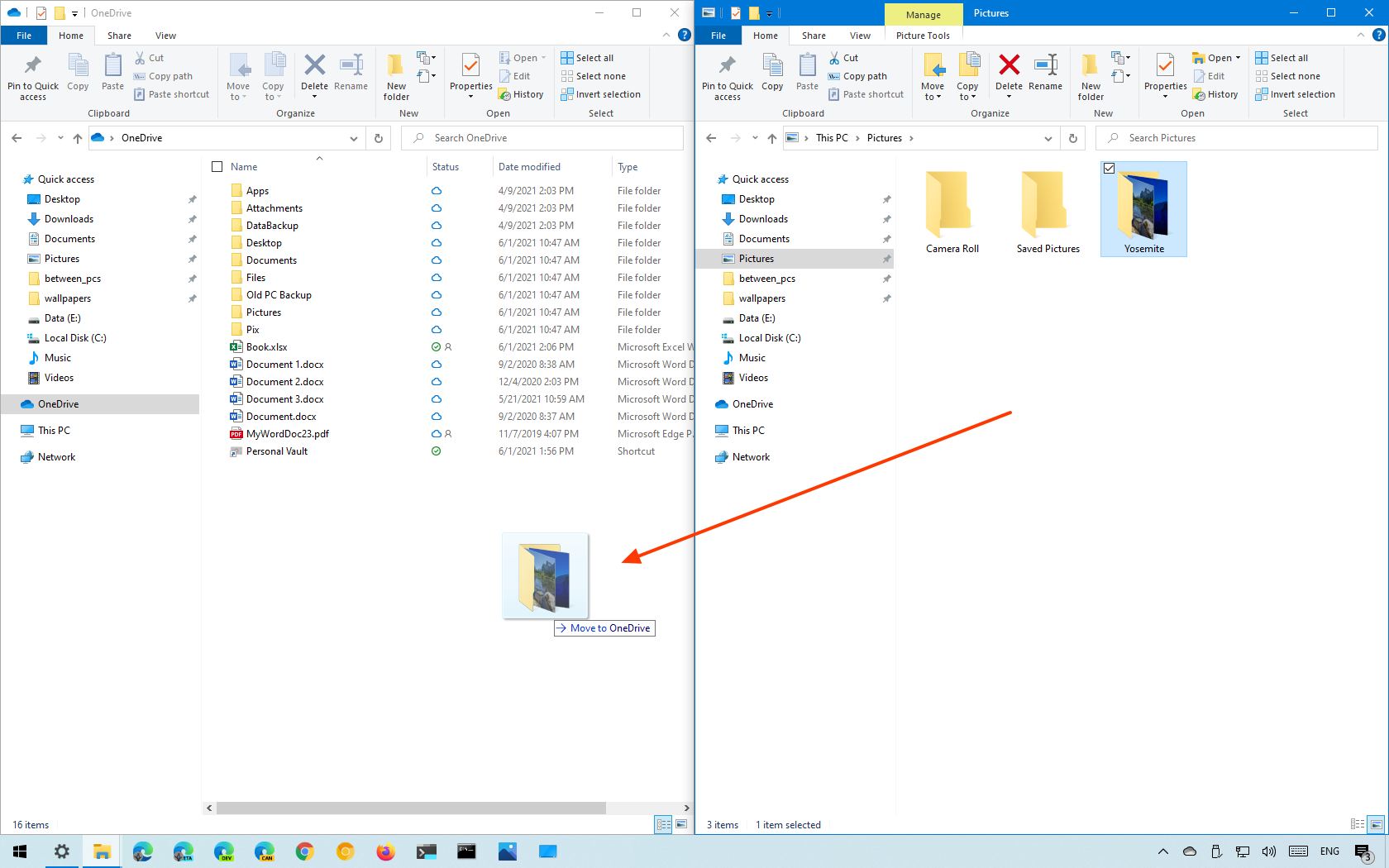

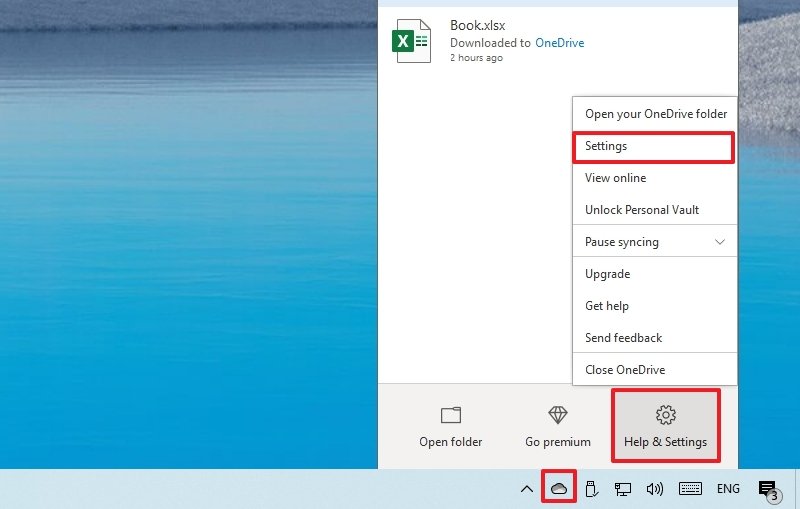
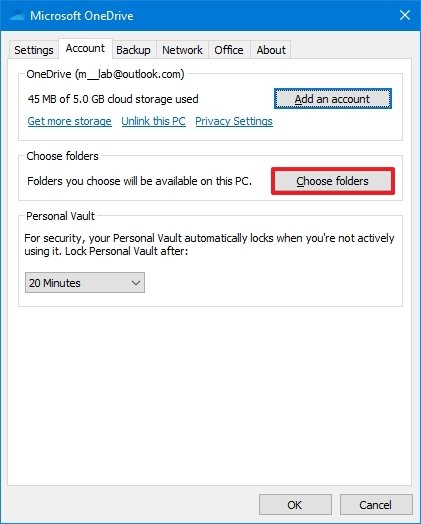
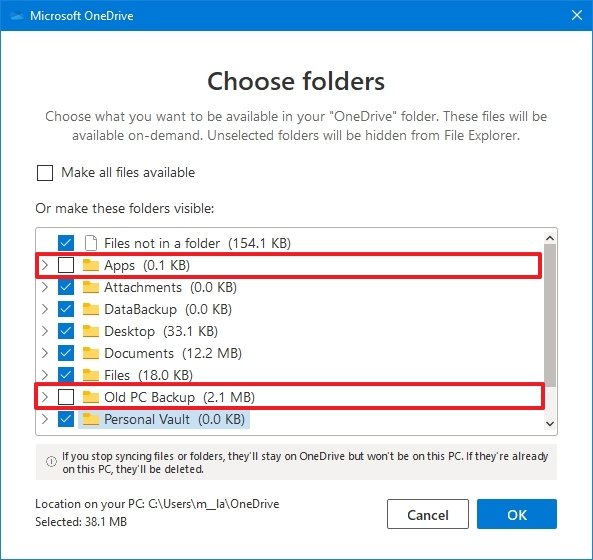
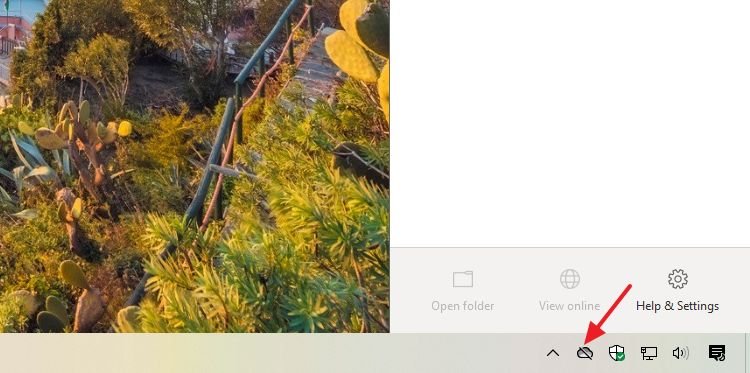
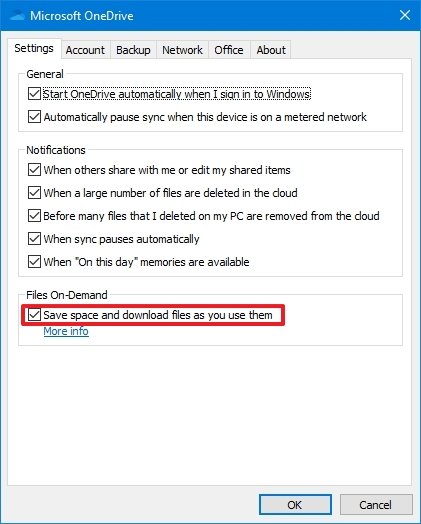
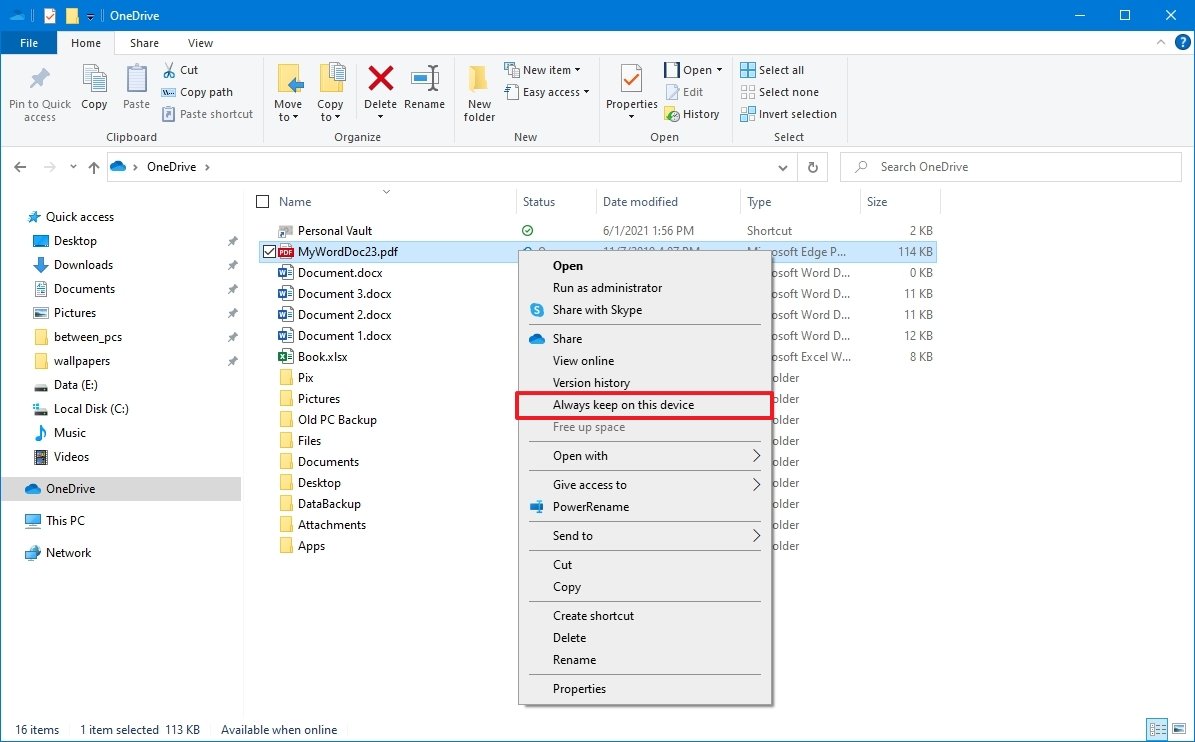
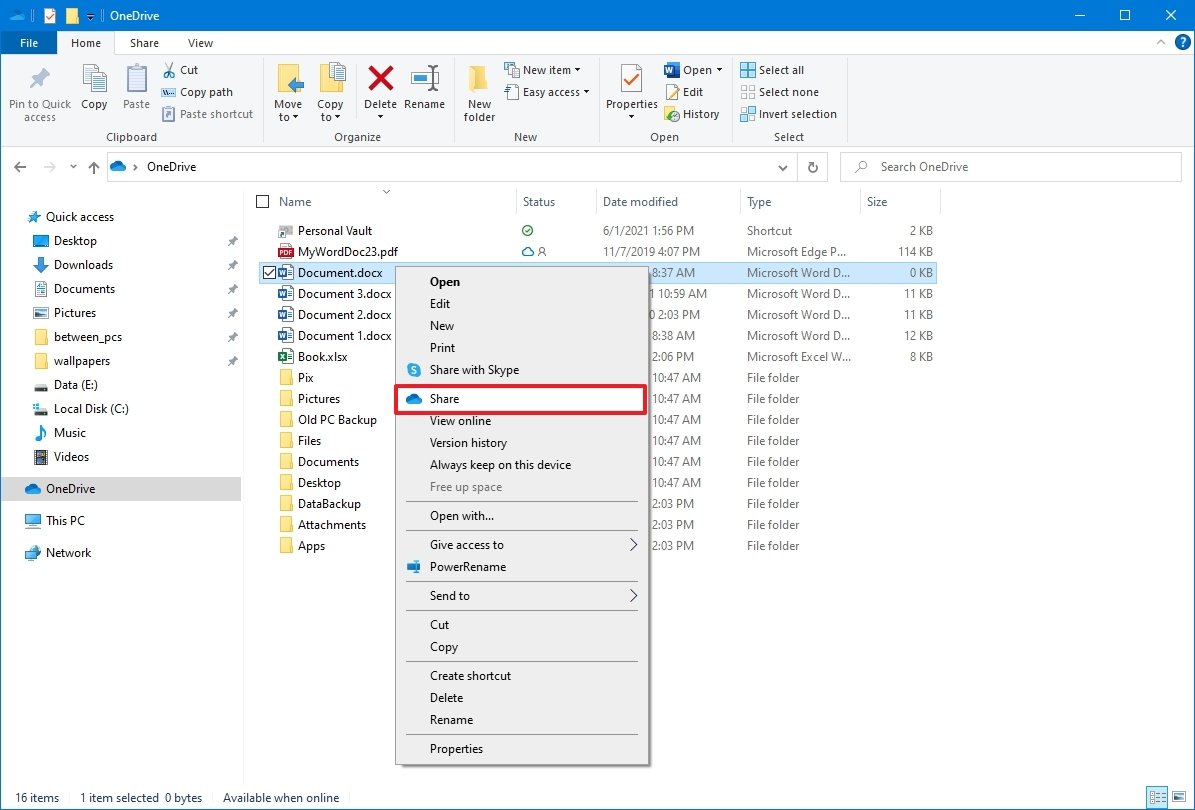
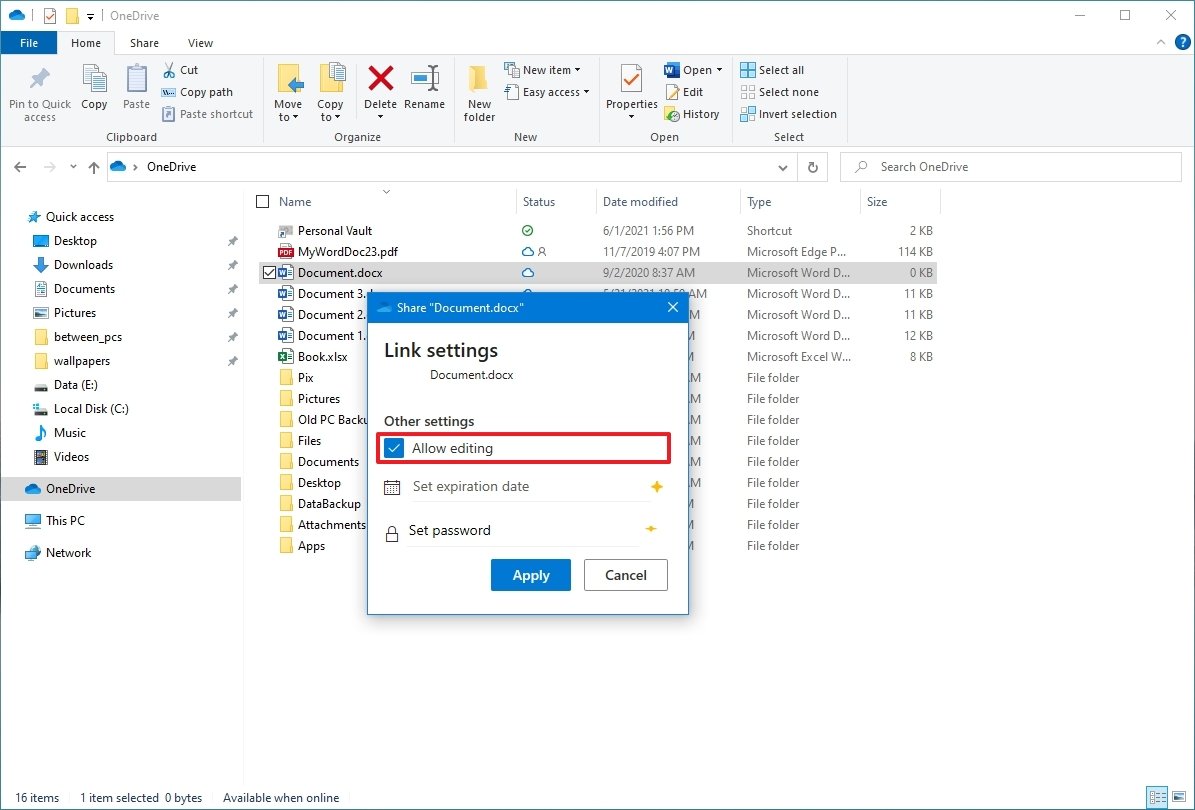

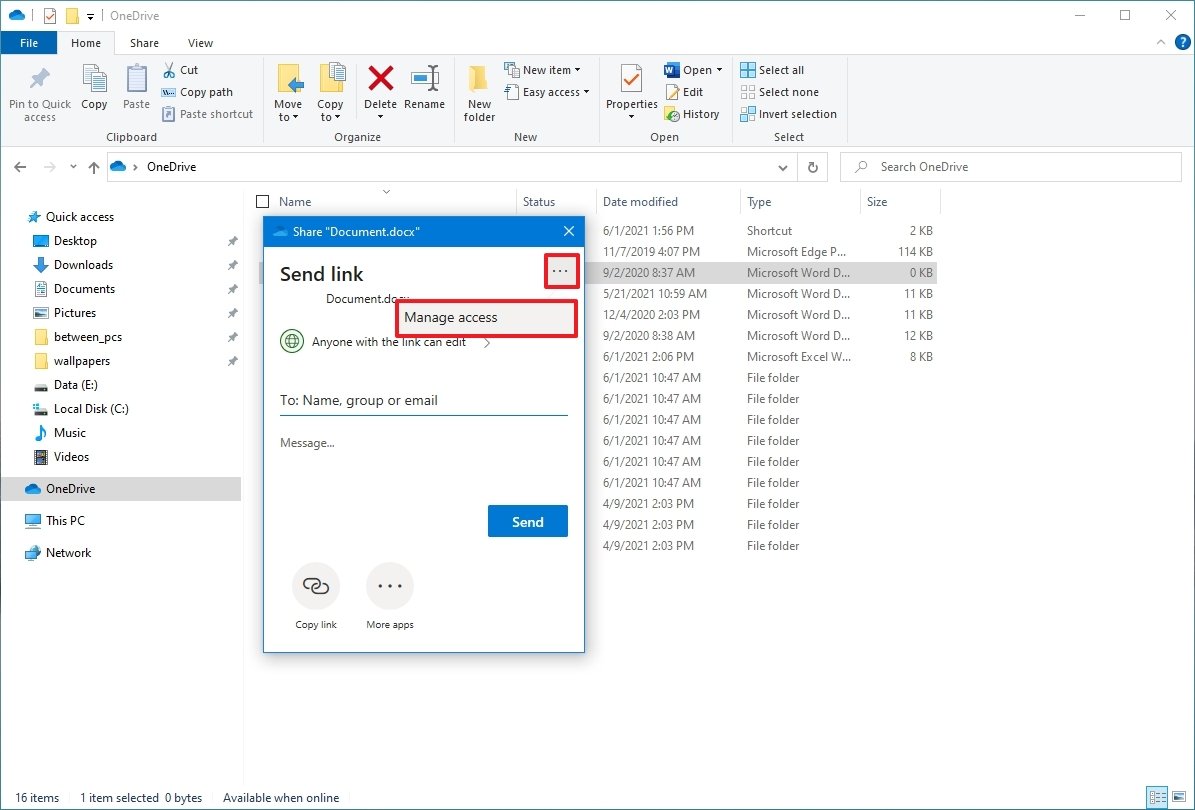
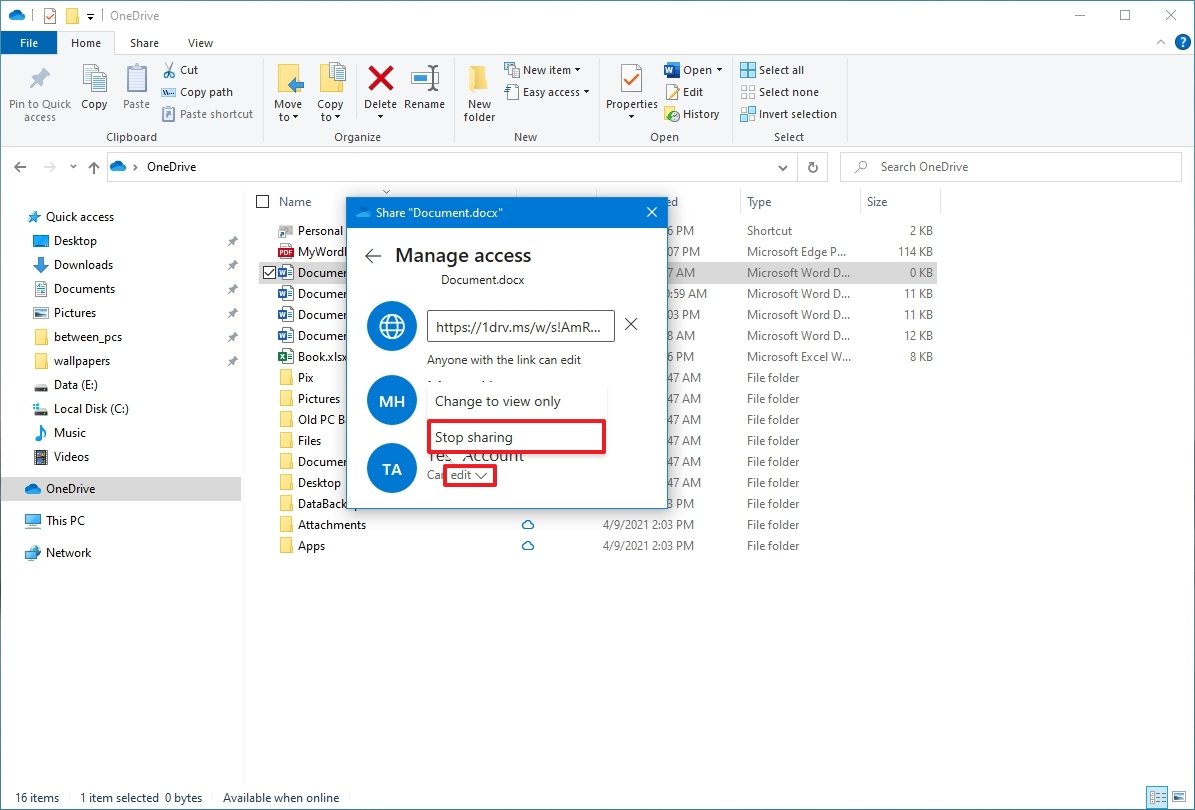
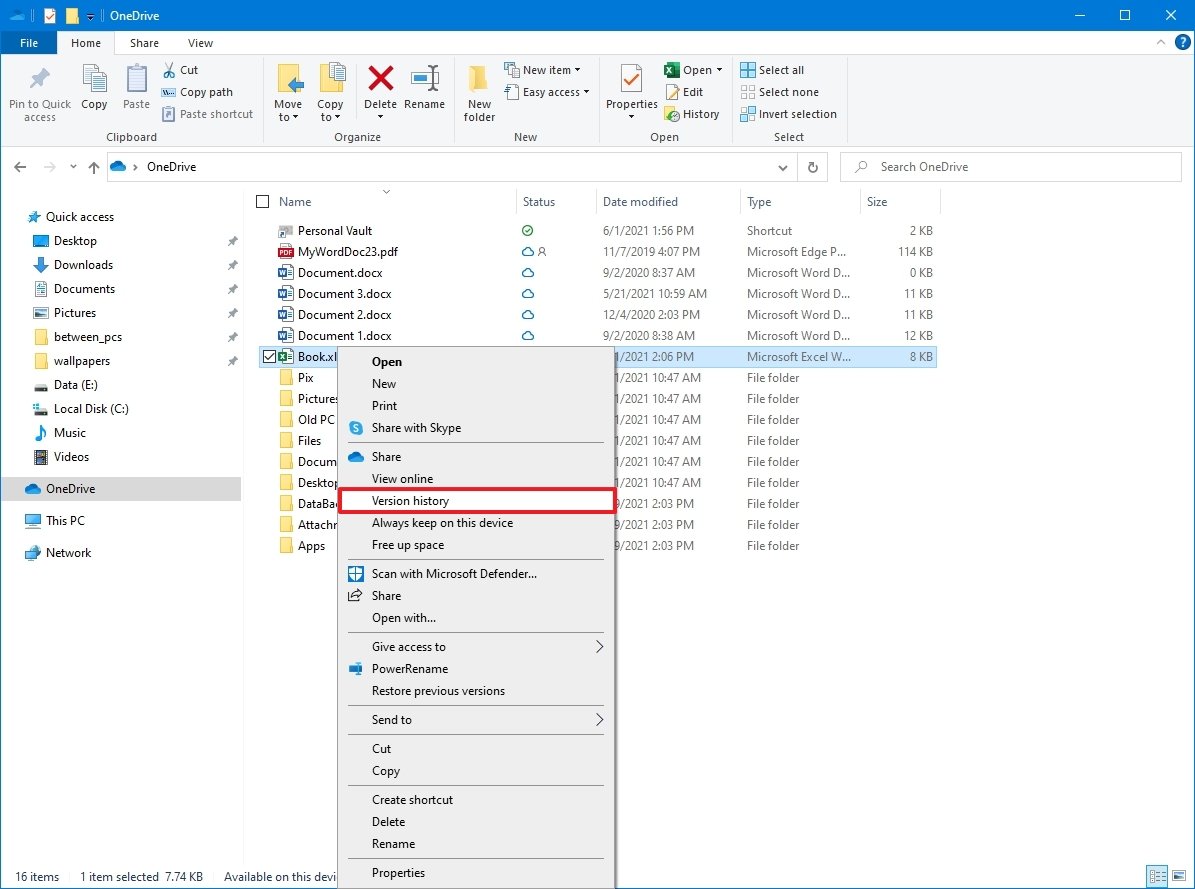
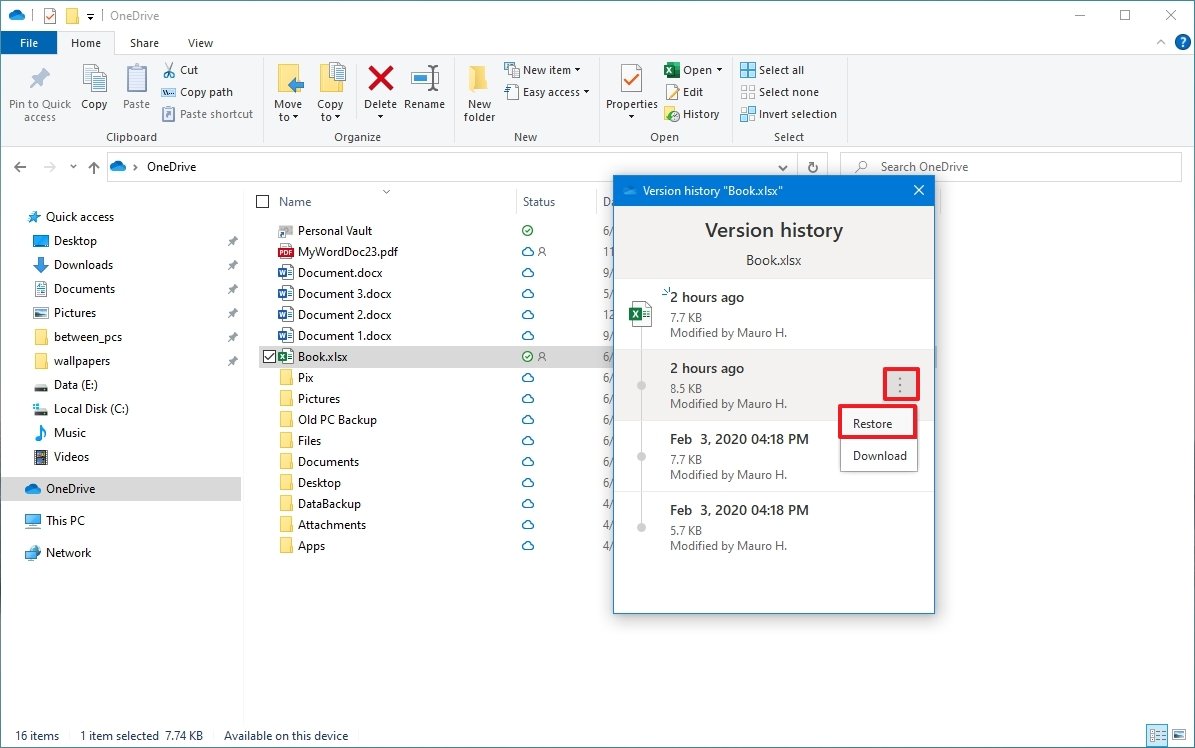

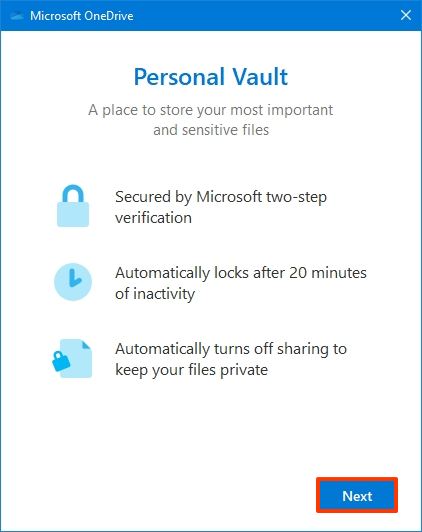

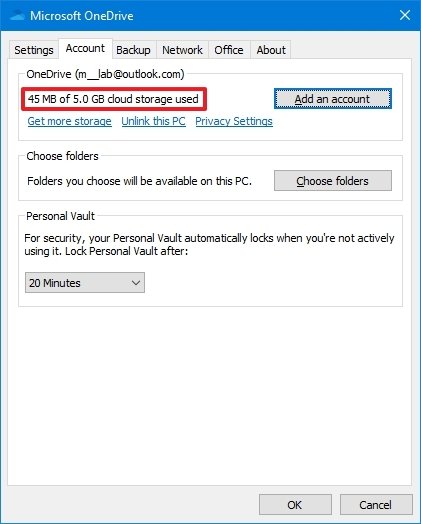
No comments: